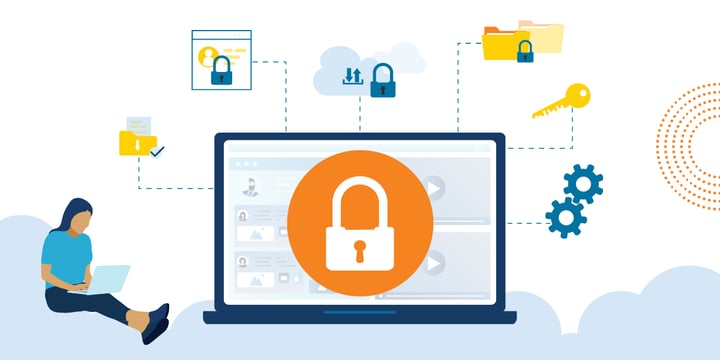Domestic abusers often use victims' digital presence and online activities to track their location, monitor their activities, or reestablish contact. They may also turn to cybercrime tactics to glean information or hack into a survivor's email or social media accounts. A combination of security practices can be used to help prevent abusers from accessing someone's digital life, and robust cybersecurity software is a great place to start.

A Solid Security Foundation
For survivors, up-to-date antivirus and anti-malware software is a solid first line of defense. Using VPN software adds an extra layer of protection against unwanted intrusions into their online activities.
Norton 360 Deluxe protects computers and mobile devices against the latest digital threats, such as malware, ransomware, and spyware. Its built-in firewall also protects against uninvited connections to computers and other devices. This makes it more difficult to steal information or make dangerous changes to a device.
Norton Secure VPN protects personal information when using shared devices or Wi-Fi networks. This also helps to protect people from unwanted connections, as well as shielding identities from others and preventing connections from being intercepted.
TechSoup has partnered with Norton and the National Network to End Domestic Violence (NNEDV) to provide domestic violence survivors with software to protect their devices and online presence. Organizations working with domestic violence survivors can access and distribute these tools to people who need them.
Cybersecurity Next Steps
Unfortunately, no security software can prevent all threats. To bridge the gap, Armin Wasicek, senior research manager at Gen™, recommends practicing what he calls "cyber hygiene." (TechSoup partners Norton and Avast are a part of the Gen family of brands.)
According to Wasicek, good cyber hygiene centers diligence, care, and good judgment. Security software is extremely important, and an effective online safety plan also requires education on cyber safety awareness. This involves day-to-day vigilance and learning how to spot the signs that someone has access to, or is trying to access your online accounts, devices, or location.
Wasicek says that survivors often need help to "secure their digital assets, stop using shared accounts, and create new ones through clean devices that haven't been accessed by their abusers."
According to NNEDV, it's helpful to make a list of all platforms, systems, and devices used and either change the passwords to these accounts or create completely new ones. In addition to digital accounts that are accessed directly, survivors should carefully assess any online accounts they access by using their Facebook, Google, Twitter, or Apple ID logins.
It's also important to have unique passwords that do not include or reference personally identifiable information, like birthdays, names, or other details that an abuser would know. A (new) password manager can help survivors keep track of their passwords, and many also offer suggestions for strong, unique passwords.
NNEDV also points out that important documents and emails may live in the accounts that the survivor is deleting, so it may be helpful to make copies of these and store them in a separate, secure location.
Security, Safety, and Confidence
The Safety Net Project, run by NNEDV with years-long funding and expertise from Norton, aims to support survivors of abuse with resources and tools. This includes education on what is or is not safe to share online, instructions for how to make social media accounts private, removing location sharing, and more. Norton and NNEDV recently released an overview of these tips in the Securing Devices & Accounts guidelines. To learn more, visit the NNEDV Safety Net Project website.
Top photo: Shutterstock









